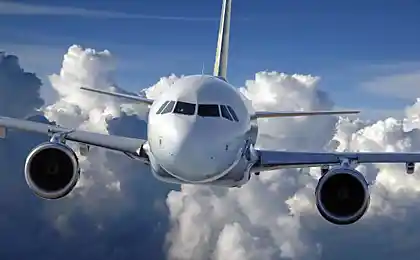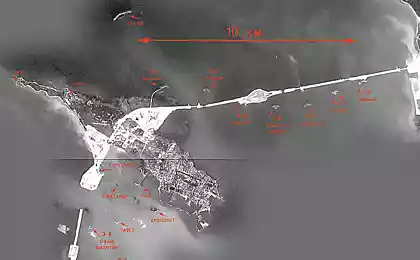816
Secrets of modern aircraft (11 photos)
Airliner can be called a masterpiece of engineering of the modern age: it is incredibly complicated and, at the same time accessible to all. Billions of people each year travel the world at a crazy speed and incredible height, quite often without thinking about how it works.
Perhaps flights to combine all nations have done far more than anything else. And there are some interesting things that few people know, but it is very interesting.
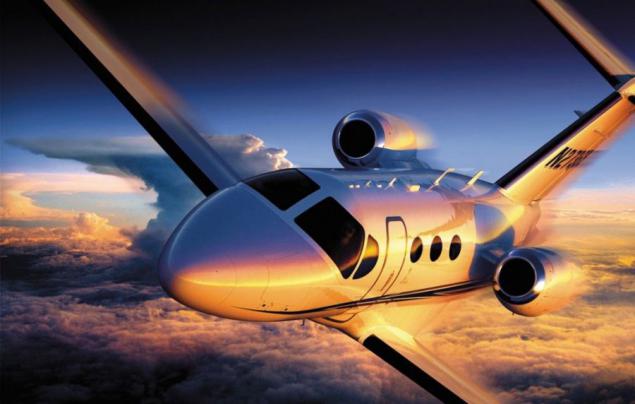
1. Inside engines have explosive charges
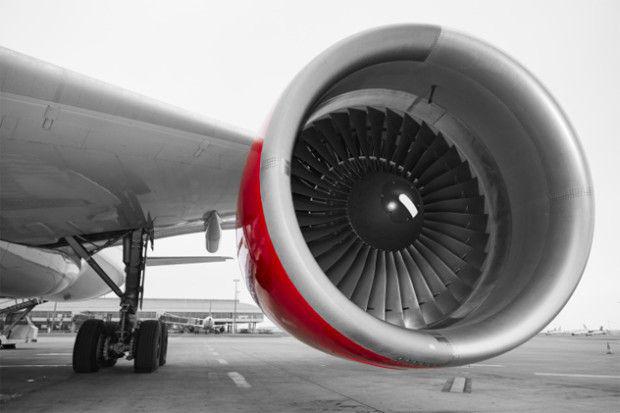
Let's forget for a moment that all of the wing is filled with highly flammable fuel (yes, it takes fuel inside the wing). Each engine has one (sometimes two) explosive charge, known as the pyro. Oddly enough, it is necessary to ensure that the motor is not burned. After the fire explosive charge knocks a sealed container in the engine, which is under great pressure, and fire-retardant chemicals extinguish any fire inside the engine.
Most aircraft are equipped with two charges, though, in theory, should suffice and one. But if something goes wrong, you have to win for the second plane a few precious seconds - suddenly sit still. Extinguishing systems in aircraft cargo compartments work on the same principle.
2. Your plane can be polurazbitym

Each airline wants its planes flew so often and transported at a time for as many people as possible. If the aircraft is not in the sky, he does not make money. Therefore, when a plane for some reason can not fly, the airline is doing everything possible so that he flew back as soon as possible, but a full repair can take several hours or even days.
Breakdowns are not terrible - coffee break or light. But I realize that some detail is important so that the aircraft can not be without it rise into the sky?
The answer is in the document, known as CSI, or "Minimum Equipment List" - in this list made by any possible failure. He will let you know if you need this particular aircraft, and yet there is said that the pilots have to do if something goes wrong.
Worse, the MIP allows the aircraft to fly, when only about half of the standard systems. Yes, it is still safe, but if you work half suddenly fails, then there is nothing to insure it. In the end, it was a senior pilot, who is also the captain decides whether or not to fly on this vessel. However, the airline can always hire another, less fastidious pilot.
In the middle of the busy summer season, the airline can not afford to send planes for repair, but it can be constantly postponed. This means that many of the aircraft are equipped with a lot worse than we would like.
3. The air flow from the engine
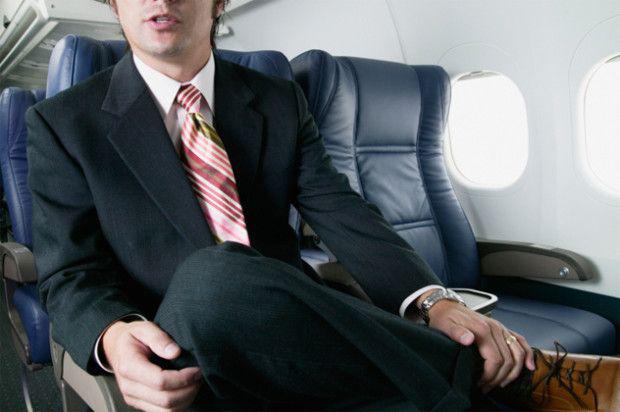
The air in the plane is not the same as outside. At those altitudes where commercial airliners fly, the air has the same composition (20% oxygen), which is on the ground. But the air is too rarefied for a person to breathe and remain conscious.
The engineers found a solution - take the air out of the engine: they are "concentrated" the air to fly, so that the passengers to breathe enough. Of course, the air inside the cabin is not quite the same as on the ground - in this case, there would be too much difference between the pressure inside and outside the cabin. So in most planes found a happy medium: the air you breathe in the cabin, on the ground is at an altitude of 2400 meters.
There is also a disadvantage: everything that passes through the engine is in the cabin. For example, in the case of a fire engine interior delayed toxic smoke or smoke from antifreeze or toxic compounds from the combustion of lubricating oils.
4. Emergency decompression is much worse than you think
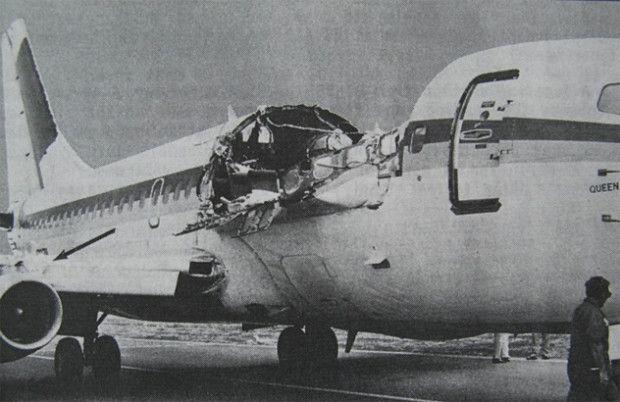
When the flight attendants asked to wear an oxygen mask on yourself before you rush to the aid of others, they are not joking. The air at high altitude is so rarefied that in case of decompression, your lungs can not provide a sufficient amount of oxygen the brain, so you lose consciousness after 35-40 seconds, depending on your health and the altitude at which the aircraft is located. At this time you will feel the euphoria, dizziness, and finally lose consciousness.
It seems to be one minute without oxygen - it is very small, but you need to receive supplemental oxygen as soon as possible because of the possible side effects of lack of oxygen, such as cerebral hypoxia.
Worse still, the air at high altitudes is very cold: considered normal temperature is about -60 ° C. Decompression may cause that the body starts to break down, and there will be a visible fog, which, naturally, many passengers plunge into a state of shock. So do not neglect the advice - just wear an oxygen mask if that.
5. Oxygen masks ephemeral
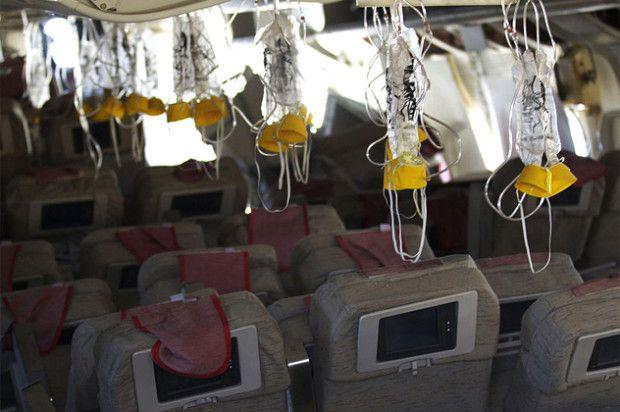
Small yellow masks do not work as most people think: you can assume that a cool breathe pure oxygen in the cylinder for diving, but it is not. Each set of four or five masks associated with the chemical generator - a piece of metal, flammable, once pull one of the masks. Burning is the source of the oxygen that you breathe. This oxygen will stink of smoke, slightly burn and have an unpleasant taste and odor.
Of course, the metal can burn forever - a mask will stop working after about 12 minutes, during which the pilots should have time to go down to the height where you can breathe. In the appendage to everything else in the mask filters and it is not vented, which means that it does not protect you from any fumes or smoke in the cabin. But a little help mask. The pilots also have full oxygen cylinders so that they can breathe normally for two hours, and possibly land the plane in which case.
6. Inflatable ladders do not work as inflatables

If your plane crashed in the ocean, you have to sit in a warm, dry lifeboat - ideally. But the next time before the flight, please read the safety instructions. If the figures of passengers on instructions swim near the boat or inflatable slides, one hand on the board and do not sit in it, then your ladder just topple over if someone tries to get inside. By law, most of the aircraft must be equipped with only emergency ladders to get out was just on the ground.
In addition, trap density heavier than a simple inflatable slides, and carry so much excess weight aircrafts, flying mostly over land, it is unprofitable. Even if the plane crashes near the coastline, saved still easier than in the open sea. But there is good news - in transatlantic flights from the aircraft on board is always a full inflatables.
7. Panic can cause using bribes

After a loud crash in Manchester, in which many people died, the researchers decided to understand why it happened - should have saved more. Soon, however, researchers have encountered obstacles - all simulated situations of passengers were calm and polite, no one panicked, so that the evacuation went smoothly. In real life, people often panic takes hold.
We had to make sure that people imitated the panic. How? Very simple: the researchers promised to give money to those who choose the first. Quite a bit, to about $ 30. It was enough to make the most average people began pushing and scrambling on the backs of other people's seats. So the researchers got their data, and they coincided with the number of actual victims - the reason for the high death rate was just panic.
8. Portable electronic devices have no effect on the system of the aircraft

Common sense prevailed: the passengers all over the world were finally allowed to use personal electronic devices in most phases of flight. In some cases (bad visibility, low clouds, fog) aircraft used for navigation during landing signal from the ground, and there is a theory that cell phones interfere with taking these signals, and the plane can deviate from the course.
Of course, this is a good reason to turn off at the time of the phone, is not it? But in favor of the theory there is no evidence. And then, did the plane a few million dollars can be so easy to break using a mobile phone? In general, all right, do not disable anything.
9. ... but mobile devices pilots really been the cause of accidents

This does not mean that mobile phones have never been the cause of incidents with potentially lethal. The closer to the airport, and hence to the ground, the more dangerous it becomes a flight. Unfortunately, the closer to the ground, the more likely that the pilot's cell phone rang, or starts to vibrate, that is, it will distract the pilot at a critical moment.
Once the pilot because of the phone forgot landing gear during landing. Another plane barely had time to take off - the pilot because of the mobile phone ring tone was distracted and could not manage to perform the maneuver.
10. "minimum fuel" - it's not as scary as it sounds

You probably will not be too pleased to know that the vast majority of modern aircraft of the airlines run by a minimum amount of fuel - if the fuel tank more than necessary for the flight, the plane, and uses it anymore, just to fly from point A to point B. Greater weight - more work for the engines. And the flight becomes more expensive.
But the "minimum fuel" does not mean that the fuel in the plane just enough to suffice for the flight between the points of origin and destination. According to the international rules of air on board shall be the fuel for the flight and "free" fuel (amount - 3-5% of the required). It is used in the event of leakage or flight from point B to point C, B if for some reason it is impossible to get. Usually, it enough for another 30 minutes of flight.
Perhaps flights to combine all nations have done far more than anything else. And there are some interesting things that few people know, but it is very interesting.

1. Inside engines have explosive charges

Let's forget for a moment that all of the wing is filled with highly flammable fuel (yes, it takes fuel inside the wing). Each engine has one (sometimes two) explosive charge, known as the pyro. Oddly enough, it is necessary to ensure that the motor is not burned. After the fire explosive charge knocks a sealed container in the engine, which is under great pressure, and fire-retardant chemicals extinguish any fire inside the engine.
Most aircraft are equipped with two charges, though, in theory, should suffice and one. But if something goes wrong, you have to win for the second plane a few precious seconds - suddenly sit still. Extinguishing systems in aircraft cargo compartments work on the same principle.
2. Your plane can be polurazbitym

Each airline wants its planes flew so often and transported at a time for as many people as possible. If the aircraft is not in the sky, he does not make money. Therefore, when a plane for some reason can not fly, the airline is doing everything possible so that he flew back as soon as possible, but a full repair can take several hours or even days.
Breakdowns are not terrible - coffee break or light. But I realize that some detail is important so that the aircraft can not be without it rise into the sky?
The answer is in the document, known as CSI, or "Minimum Equipment List" - in this list made by any possible failure. He will let you know if you need this particular aircraft, and yet there is said that the pilots have to do if something goes wrong.
Worse, the MIP allows the aircraft to fly, when only about half of the standard systems. Yes, it is still safe, but if you work half suddenly fails, then there is nothing to insure it. In the end, it was a senior pilot, who is also the captain decides whether or not to fly on this vessel. However, the airline can always hire another, less fastidious pilot.
In the middle of the busy summer season, the airline can not afford to send planes for repair, but it can be constantly postponed. This means that many of the aircraft are equipped with a lot worse than we would like.
3. The air flow from the engine

The air in the plane is not the same as outside. At those altitudes where commercial airliners fly, the air has the same composition (20% oxygen), which is on the ground. But the air is too rarefied for a person to breathe and remain conscious.
The engineers found a solution - take the air out of the engine: they are "concentrated" the air to fly, so that the passengers to breathe enough. Of course, the air inside the cabin is not quite the same as on the ground - in this case, there would be too much difference between the pressure inside and outside the cabin. So in most planes found a happy medium: the air you breathe in the cabin, on the ground is at an altitude of 2400 meters.
There is also a disadvantage: everything that passes through the engine is in the cabin. For example, in the case of a fire engine interior delayed toxic smoke or smoke from antifreeze or toxic compounds from the combustion of lubricating oils.
4. Emergency decompression is much worse than you think

When the flight attendants asked to wear an oxygen mask on yourself before you rush to the aid of others, they are not joking. The air at high altitude is so rarefied that in case of decompression, your lungs can not provide a sufficient amount of oxygen the brain, so you lose consciousness after 35-40 seconds, depending on your health and the altitude at which the aircraft is located. At this time you will feel the euphoria, dizziness, and finally lose consciousness.
It seems to be one minute without oxygen - it is very small, but you need to receive supplemental oxygen as soon as possible because of the possible side effects of lack of oxygen, such as cerebral hypoxia.
Worse still, the air at high altitudes is very cold: considered normal temperature is about -60 ° C. Decompression may cause that the body starts to break down, and there will be a visible fog, which, naturally, many passengers plunge into a state of shock. So do not neglect the advice - just wear an oxygen mask if that.
5. Oxygen masks ephemeral

Small yellow masks do not work as most people think: you can assume that a cool breathe pure oxygen in the cylinder for diving, but it is not. Each set of four or five masks associated with the chemical generator - a piece of metal, flammable, once pull one of the masks. Burning is the source of the oxygen that you breathe. This oxygen will stink of smoke, slightly burn and have an unpleasant taste and odor.
Of course, the metal can burn forever - a mask will stop working after about 12 minutes, during which the pilots should have time to go down to the height where you can breathe. In the appendage to everything else in the mask filters and it is not vented, which means that it does not protect you from any fumes or smoke in the cabin. But a little help mask. The pilots also have full oxygen cylinders so that they can breathe normally for two hours, and possibly land the plane in which case.
6. Inflatable ladders do not work as inflatables

If your plane crashed in the ocean, you have to sit in a warm, dry lifeboat - ideally. But the next time before the flight, please read the safety instructions. If the figures of passengers on instructions swim near the boat or inflatable slides, one hand on the board and do not sit in it, then your ladder just topple over if someone tries to get inside. By law, most of the aircraft must be equipped with only emergency ladders to get out was just on the ground.
In addition, trap density heavier than a simple inflatable slides, and carry so much excess weight aircrafts, flying mostly over land, it is unprofitable. Even if the plane crashes near the coastline, saved still easier than in the open sea. But there is good news - in transatlantic flights from the aircraft on board is always a full inflatables.
7. Panic can cause using bribes

After a loud crash in Manchester, in which many people died, the researchers decided to understand why it happened - should have saved more. Soon, however, researchers have encountered obstacles - all simulated situations of passengers were calm and polite, no one panicked, so that the evacuation went smoothly. In real life, people often panic takes hold.
We had to make sure that people imitated the panic. How? Very simple: the researchers promised to give money to those who choose the first. Quite a bit, to about $ 30. It was enough to make the most average people began pushing and scrambling on the backs of other people's seats. So the researchers got their data, and they coincided with the number of actual victims - the reason for the high death rate was just panic.
8. Portable electronic devices have no effect on the system of the aircraft

Common sense prevailed: the passengers all over the world were finally allowed to use personal electronic devices in most phases of flight. In some cases (bad visibility, low clouds, fog) aircraft used for navigation during landing signal from the ground, and there is a theory that cell phones interfere with taking these signals, and the plane can deviate from the course.
Of course, this is a good reason to turn off at the time of the phone, is not it? But in favor of the theory there is no evidence. And then, did the plane a few million dollars can be so easy to break using a mobile phone? In general, all right, do not disable anything.
9. ... but mobile devices pilots really been the cause of accidents

This does not mean that mobile phones have never been the cause of incidents with potentially lethal. The closer to the airport, and hence to the ground, the more dangerous it becomes a flight. Unfortunately, the closer to the ground, the more likely that the pilot's cell phone rang, or starts to vibrate, that is, it will distract the pilot at a critical moment.
Once the pilot because of the phone forgot landing gear during landing. Another plane barely had time to take off - the pilot because of the mobile phone ring tone was distracted and could not manage to perform the maneuver.
10. "minimum fuel" - it's not as scary as it sounds

You probably will not be too pleased to know that the vast majority of modern aircraft of the airlines run by a minimum amount of fuel - if the fuel tank more than necessary for the flight, the plane, and uses it anymore, just to fly from point A to point B. Greater weight - more work for the engines. And the flight becomes more expensive.
But the "minimum fuel" does not mean that the fuel in the plane just enough to suffice for the flight between the points of origin and destination. According to the international rules of air on board shall be the fuel for the flight and "free" fuel (amount - 3-5% of the required). It is used in the event of leakage or flight from point B to point C, B if for some reason it is impossible to get. Usually, it enough for another 30 minutes of flight.



